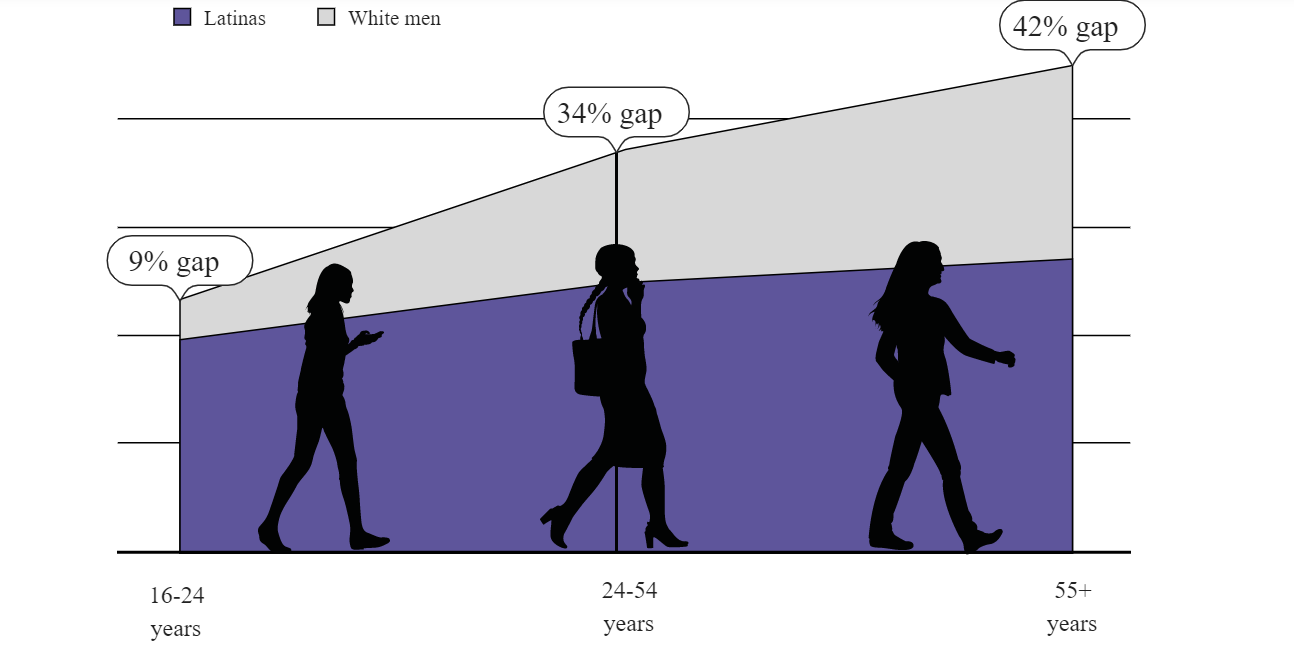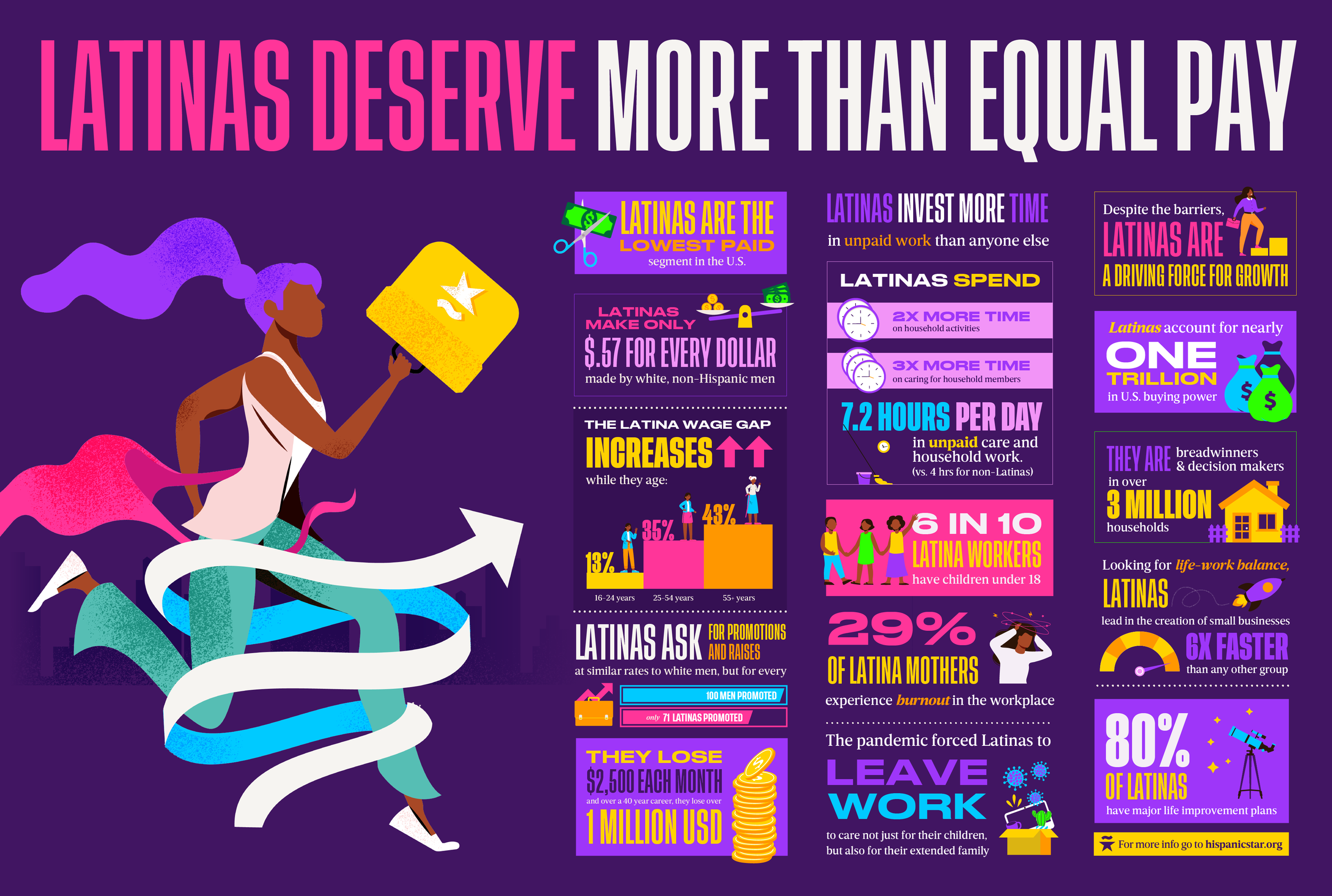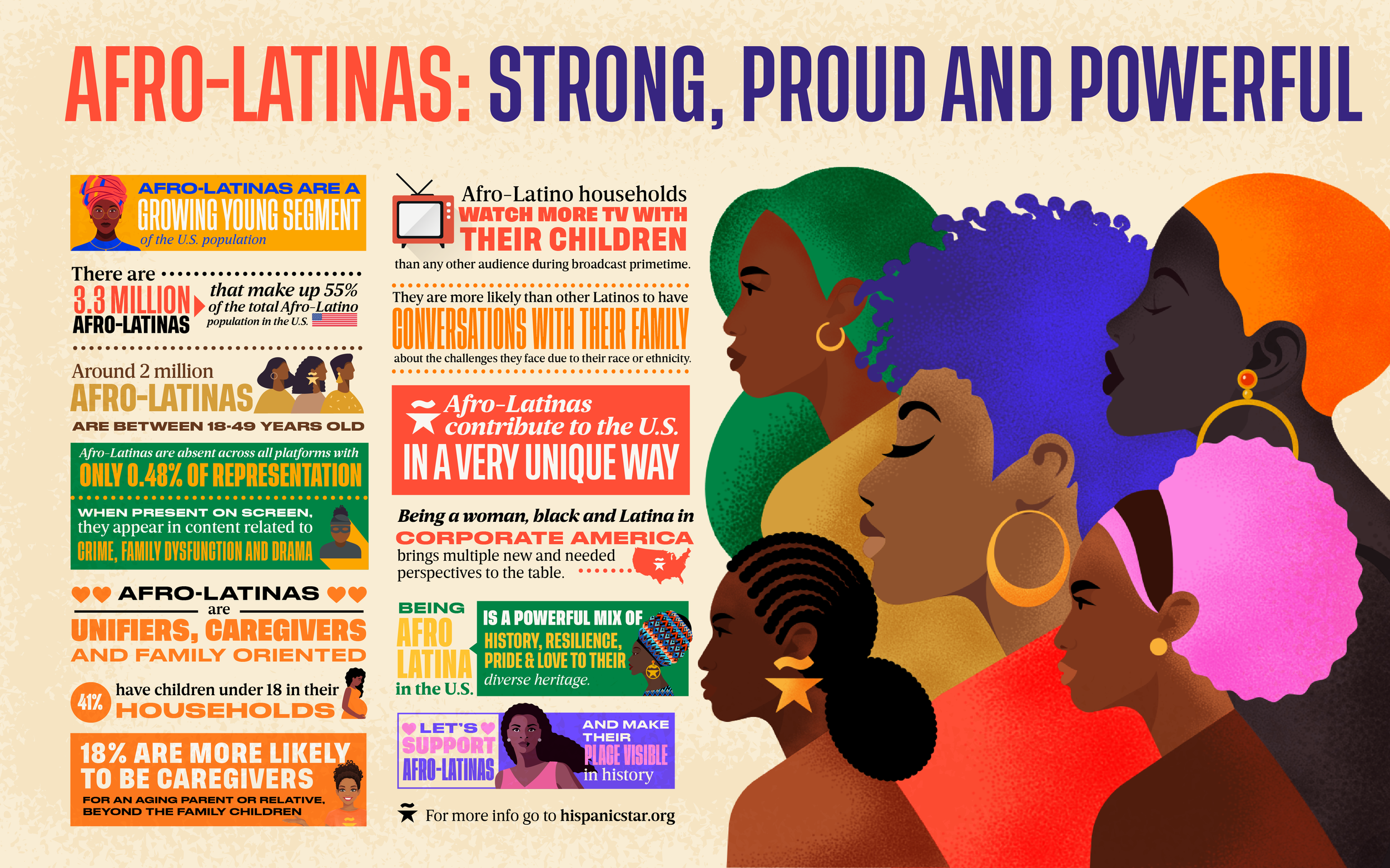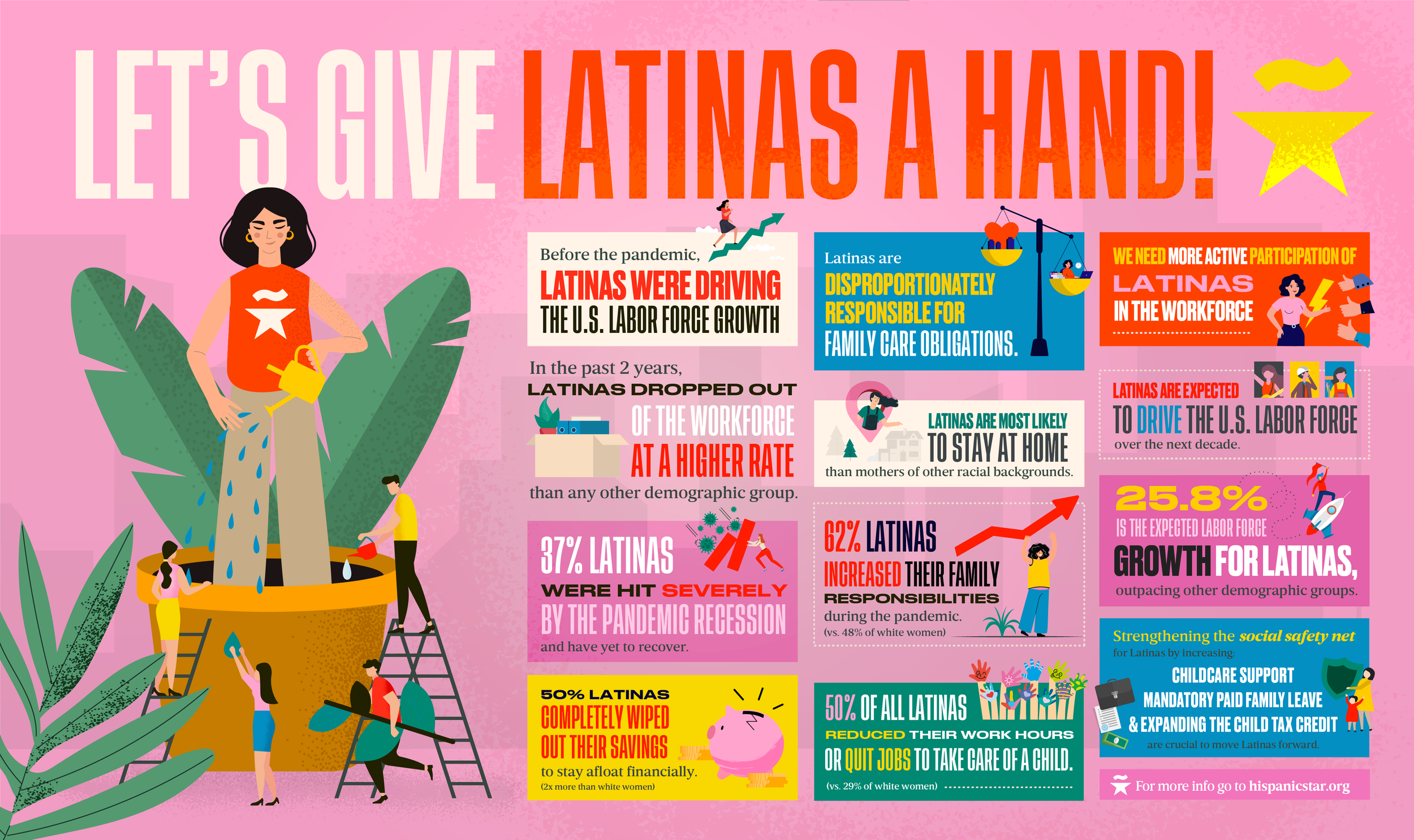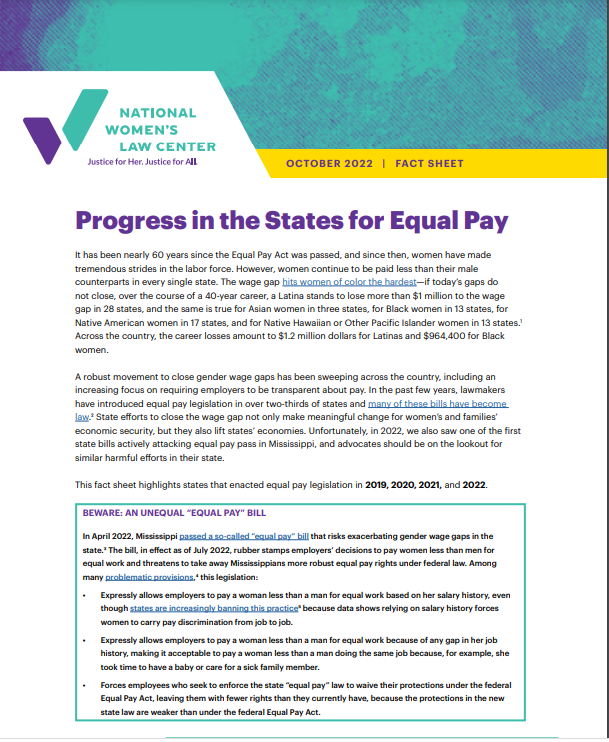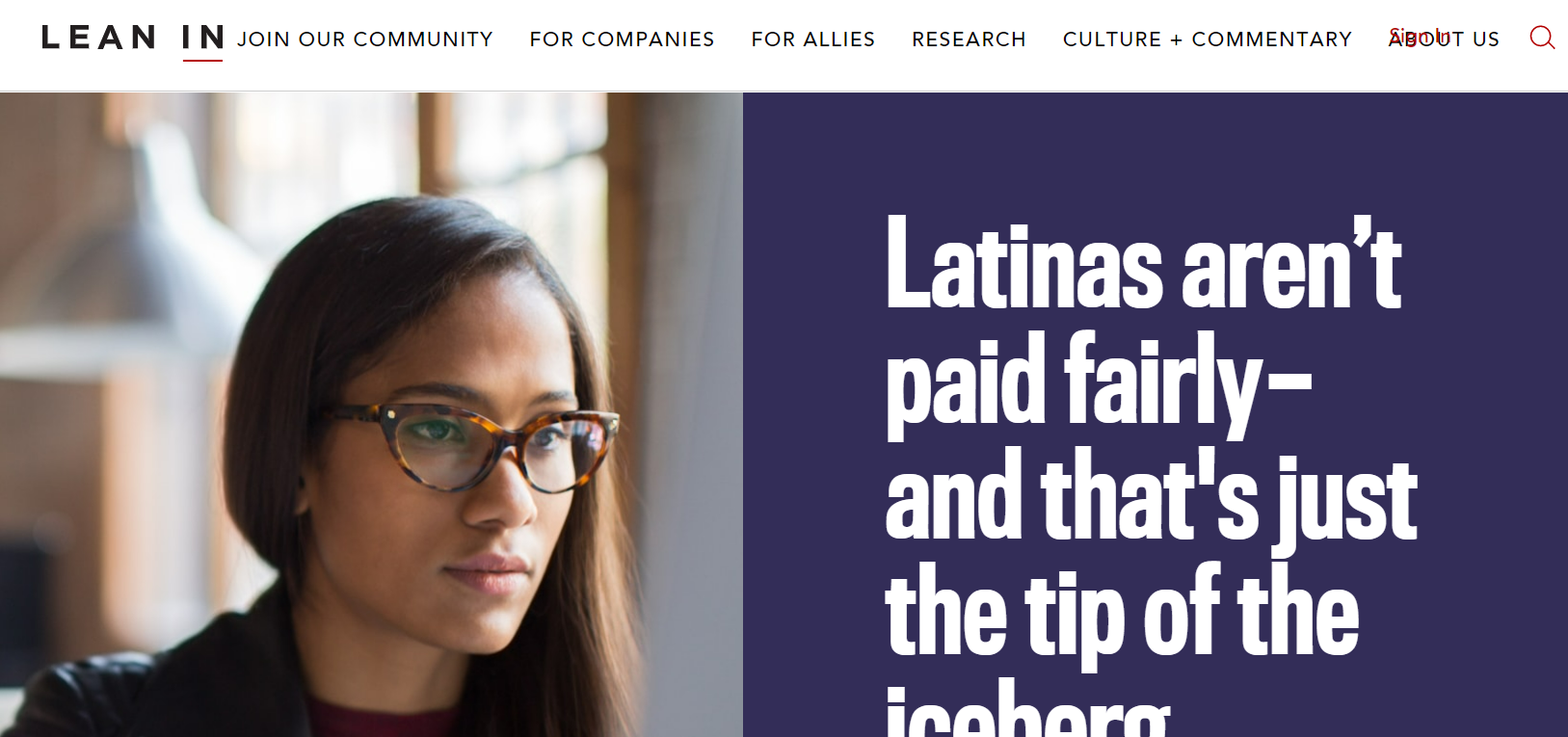October 8, 2025 is Latina Equal Payday
Latina Equal Pay Day marks the day in the year when Latina women finally earn what white, non-Hispanic men earned in the previous calendar year due to the wage gap. Every Year the date changes on when Latina Equal Pay Day lands on depending on the latest data wage gap. Generally it's somewhere between October-November. The date reflects how far into the year Latinas must work to catch up. What this means: If a white man earns $1 for his work, on average, a Latina woman earns only about $0.51. This means she would need to work nearly 11 extra months well into the next year to earn the same amount. Latinas deserve a fair pay & together we say PAGAME. The Commission on Hispanic Affairs is running a month-long campaign to raise awareness about the gross pay gap, the negative societal impact and how we can work together to reduce the pay gap.
What is Latina Equal Payday?
LATINA EQUAL PAY DAY IS A REMINDER OF THE WORK WE HAVE TO DO FOR ECONOMIC FAIRNESS. Latinas are one of the fastest growing, most powerful groups in the United States. Latinas excel in every sector industry in our country. Yet Latinas face the widest GAP in the United States. Latinas are paid, on Average 51 cents for every dollar made by white, non-Hispanic men. Latina Women must work nearly 23 months to earn what white men earn in 12 months. That means it takes almost two years for Latinas to earn what White men earn in one. This also means that Latinas would have to work until the age of 90 which is beyond our life expectancy, to earn as much as white, non-Hispanic male makes by the time they are 60 years of age. The pay GAP hurts Latinas and their ability to provide for their families especially single mothers.
Why is this a problem?
The wage gap is a problem because it's not a personal choice. It goes far beyond that, it's rooted in discrimination in hiring and pay in workplaces, Latinas being overrepresented in lower pay gap. Many Latinas lack of access to education and leadership opportunities. Unpaid caregiving burdens, limited promotion opportunities, & single mothers sacrificing childcare over personal growth due to lack of environmental support. Not to mention that their is a loss overtime on their income over the course of their lifetime. In average a Latina’s career, the lost income adds up to over a million dollars compared to white men.
Pay gap by education
Latinas are going to college at higher rates than ever before. But education doesn’t eliminate the pay gap. In fact, the gap is largest for Latinas with a bachelor’s degree, who earn 31% less than white men on average. There is a miss conception that people think that Latina women chose not to be in higher position roles but the reality is that even working in the same role Latinas are paid less than white men. For example, a Latina earns 36% less than a white Manager on average. & For every 100 men promoted to manager, only 71 Latinas are promoted. The wage gap is not just a statistic; it affects families, communities, and futures. It limits opportunities and perpetuates cycles of poverty and inequality. Together, we can close the gap and empower Latina women everywhere. Let’s work towards a future where everyone is paid fairly for their contributions!
Pay Gap Based on Educational Level
Average Income Lost Over a Lifetime Due to the Pay Gap
Now you know:
Over a 40 year career, the wage gap can cost a Latina more than $1 million
It affects access to housing, education, healthcare, and retirement
It reflects deep rooted inequality based on both gender and ethnicity
The loss of 16 cents on the dollar adds up over a month, a year, and a lifetime. Based on this wage gap, women, regardless of their race or ethnicity, would lose $399,600 over the course of a 40-year career. woman starting her career today stands to lose between hundreds of thousands of dollars and more than $1 million over the course of her career, undercutting her ability to provide for herself and her family, build wealth, gain education, and secure her retirement.
Overall Women: On average, women lose approximately $417,400 over a 40-year career due to the gender wage gap For Black and Hispanic women who experience some of the largest wage gaps these losses are even greater, at $976,800 and $1,156,440, respectively.
How it Works
The pay gap starts early
From age 16, Latina girls are paid less than white boys the same age—and the gap only grows from there.
Even in the same job, Latinas get paid less
Many people assume that Latinas face a pay gap because they're concentrated in lower-paying roles. But even in the same job, Latinas are paid less than white men. For example, Latina nurses earn 25% less than white male nurses, on average.
The Pay Gap by Age
Despite the Advancements in education and workforce participation, Latinas earn siginificantly less than their white, non-Hispanic male counterparts. for example, in 2023, the median annual earnings for Latina women working full-time year round were just 57.1% of those earned by white men, amounting to approximately $39,511 annually. Over a 40 year career, this gap can result in a loss of about $1.3 million in earnings for a typical Latina.
Here are some key factors contributing to the Wage Gap for Latinas:
Key Factors Contributing to the Wage Gap
-
Latinas are disproportionately employed in low wage industries such as hospitality, retail, caregiving, and agriculture. These sectors often lack basic workplace protections and offer limited opportunities for advancement, contributing to the wage gap for Latinas.Description text goes here
-
While more Latinas are pursuing higher education, they continue to be underrepresented in high , ppaying fields like STEM. A very shocking factor as well is that Latinas with bachelor's degrees earn, on average, 31% less than their white male peers with similar education levels.
-
Latinas face systemic discrimination in hiring, promotions, and pay decisions. Even when employed in the same roles, they often receive lower wages than their white male counterparts. For instance, Latina nurses earn 25% less than white male nurses on average.
-
Latinas are underrepresented in leadership roles, comprising only 2% of corporate vice presidents and 4% of managers. They also report fewer mentorship and sponsorship opportunities, which are crucial for career advancement.
-
Cultural expectations may discourage Latinas from negotiating salaries or advocating for promotions. This is compounded by a lack of representation and support networks, making it challenging for Latinas to navigate workplace dynamics effectively.
-
In many Latino communities, women are socialized to prioritize family and caregiving above personal or professional aspirations. This cultural construct, known as marianismo, emphasizes traits like self sacrifice and emotional restraint. While these values foster strong family bonds, they can also lead to self silencing and internalized guilt when pursuing personal goals. For single Latina mothers, these expectations are intensified. They are often seen as the primary caregivers and moral anchors of the family, which can lead to judgment if they seek career advancement or leadership positions. This societal pressure is compounded by the concept of (vergüenza), known as a form of shame that discourages women from stepping outside traditional roles. The "motherhood penalty" the wage and opportunity gap faced by mothers can be more pronounced for Latina women. Employers may question their commitment or competence, assuming that family responsibilities will interfere with professional obligations and therefore make assumptions that a single Latina mother is not competent to hold a leadership role in the workplace.
The Pay Gap by Occupation Meadian Weekly Earnings
Families are on the front line
The pay gap is even worse for Latina mothers: They earn 54% less than white fathers. When Latinas are paid less, they have less money for basic family necessities like rent, groceries, and school supplies. Over time, this impacts families’ ability to invest in savings, higher education, or property.
Latinas are asking for more
Latinas ask for promotions and raises at similar rates to white men—yet the "broken rung" still holds them back at the first critical step up to manager. For every 100 men promoted to manager, only 71 Latinas are promoted.
Some Latinas experience substantially wider wage gaps than the wage gap for Latinas overall
• Latinas of Central American origin experience the highest wage gap and typically make less than half— 47.3 percent—of what white, non-Hispanic men typically make. Mexican and Dominican women typically make just more than half of what white, non-Hispanic men make (50.9 percent and 54.5 percent, respectively).
• Cuban (57.1 percent), South American (63.6 percent), and Puerto Rican (65.5 percent) Latinas all make less than two thirds of what white, non-Hispanic men make.
• Latinas of various origins also earn less than their Latino counterparts, although the disparity in pay is less than that between Latinas and white, non-Hispanic men
What Latinas need to know to know:
Learn about transparency laws
Encourage equitable hiring and promotion
Get informed about paid leave and childcare access
Support Latina-owned businesses
Join campaigns like #LatinaEqualPayDay
Negotiate a higher pay wage during a hiring interview
Addressing the wage gap for Latinas requires comprehensive policy CHANGE, including the implementation of the Paycheck Fairness Act and the Part-Time Worker Bill of Rights Act. We need policy changes at both the federal and state levels. The Equal Pay Act of 1963 made it illegal for employers to pay unequal wages to men and women performing substantially equal work. While this act and subsequent civil rights laws have made strides in addressing wage inequality, they have not fully closed the persistent gap between women's and men's wages. Another way is by efforts to change workplace culture, promote diversity in leadership, and provide mentorship opportunities are essential to closing the wage gap and achieving pay equity for Latina women.
We must advocate for a change in workplace culture and the public narrative surrounding women and work in our country. Deep seated notions and unconscious biases that suggest women are less valuable or capable than their male counterparts are reflected in the pay we receive and the treatment we endure. Employers need to create safe and equitable workplaces where everyone feels valued this benefits both employees and employers alike.
Get involved!
Template example of letter for your legislators in WA
Contact information for members of the legislature in Wa
Learn more about Latina Equal Pay Day with the Institute for Women’s Policy Research
What you need to know
DID YOU KNOW?
Nearly 1 in 3 Americans is not aware of the pay gap between Latinas and white men.
DID YOU KNOW?
The pay gap widens the wealth gap: how much Latinas are worth or own. The average Latina’s net worth is less than 1% of the average white man’s.







